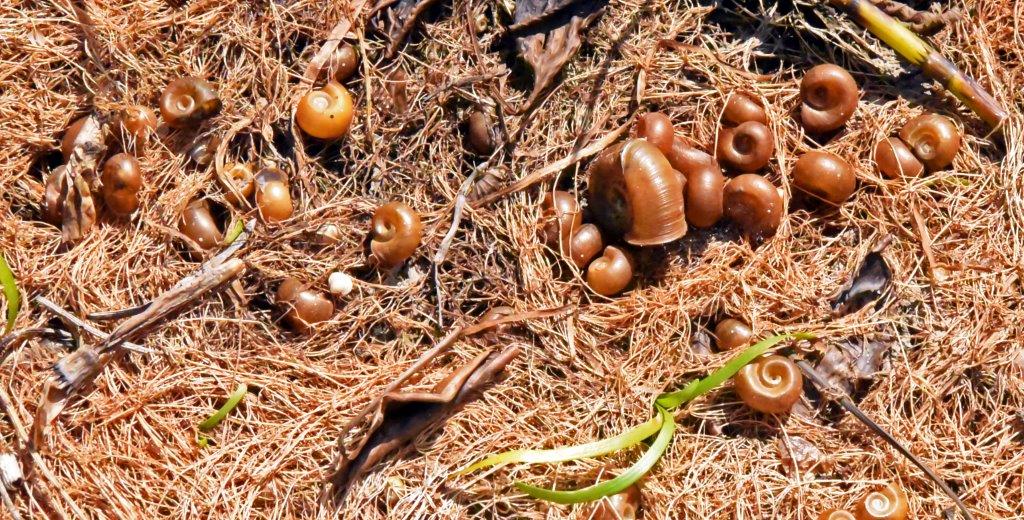Drought, Famine, and What If You See a Hungry Bear? - UPDATE August 22, 2021
Dried up snails
Dried up snails

Today, a couple old-timers were saying they had never seen such drought or heard of so many fires. Same for me. They had not heard of the two main highways between Ely and Lake Superior (Highways 1 and 2) being closed due to fire.Spreading Dogbane in early color
Spreading Dogbane
in early color

I never before saw a nice pond near here drying up to the point that its floating lily pads were lying on the exposed bottom surrounded by the dried and empty shells of snails. I don’t know if the early yellow color in Spreading Dogbane (Apocynum androsaemifolium) leaves is due to the drought, but it is a surprise.
Dried Pond
Dried pond

People say they have never seen so many bears, which is the opposite of what they say when hazelnuts and berries are abundant, and people are wondering where all the bears went. With hungry bears on the move, people are seeing bears in places they normally do not and asking what to do if they see one.
Here’s an example:
“Hi! We live in the woods in Ely and for the first time, a black bear came through the woods next to the swimming hole while we were swimming/playing in the 4-foot-deep water. What is best for the people--to stay in the lake or get out and either get into our truck that is nearby or walk to our house which is quite a ways away? I was not sure if the bear would come in the water. We had 2 dogs swimming so I got into our truck with them (thankfully they had not noticed the bear) and put them in their crates. Since it was hot, and I didn't want to overheat the dogs we stayed in the truck and ran the air conditioner. I did not want the dogs barking at the bear. What should I do if the truck isn't available or if we are hiking and we see a bear while we have the dogs? Thank you!“
What should a person do it they see a black bear? It’s hard to make any recommendation because anything I might recommend could wrongly come across as ‘Do this or you will be killed.’ In reality, it doesn’t make much difference what a person does because people have done everything all over the board, and attacks are rare no matter what they do, whether the bear is big or small or with or without cubs.
The main advice I’ve heard is ‘whatever you do, don’t run because it might trigger a predatory response.’ But there is no data pattern to support that. What I often hear in actuality is: ‘I saw a bear. I ran one way. The bear ran the other.’ I’ve asked many authors and lecturers for an example of running triggering a predatory response and have yet to get an example. (I’ll write about that in my book). Other advice I've heard is to play dead, be aggressive, speak gently, back away slowly, use pepper spray, not show fear, etc. People have done all of that with attacks being few and far between.
In the community where I am studying bears, hikers see bears, especially in the past two years of drought and scarce food. Most ignore the bears. I know of no attacks. People who fear bears tell terrifying stories like one I heard a few days ago. A boy was walking down a gravel road that is hiked by many residents. The boy was new to the area. He reported how terrifying it was to see a mother with four cubs coming straight for him. The person who told me trailed off at that point, suggesting that nothing happened, but added that the boy has not walked that road again.
Stories like that remind me of the veil of fear that colored my early experiences with bears. I have never been attacked and now interpret the same experiences as benign.
I do recommend carrying a can of Halt pepper spray to feel more confident and comfortable during the process of working through one’s fear. In all probability, they would never need to use the spray.
More on this to follow.
Thank you for all you do.
Lynn Rogers, Biologist, Wildlife Research Institute and North American Bear Center

 Author
Topic: Jewel and her cubs (Read 2378852 times)
Author
Topic: Jewel and her cubs (Read 2378852 times)
